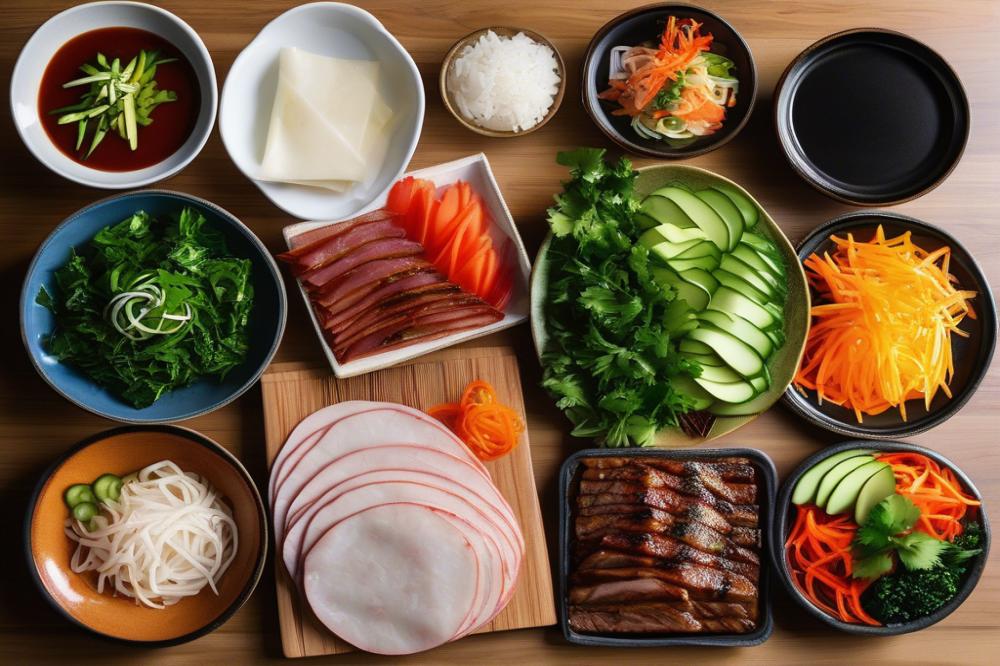Introduction
Korean bossam is a delightful dish that showcases the rich flavors of Korean cuisine. It centers around steamed pork belly, which is both tender and savory. Traditionally, this meal is served with various accompaniments. Fresh lettuce wraps provide a crisp contrast, making each bite refreshing. Pickled radish offers a tangy twist, while garlic adds a pungent aroma.
This dish holds significance in Korean culture, often enjoyed during special occasions or family gatherings. bossam symbolizes togetherness, as it invites diners to wrap their own pork and toppings. The art of sharing food brings people closer, creating bonds over flavors. Each family may have its own traditional recipe, adding personal touches to the cooking process.
Popularity has grown beyond Korea’s borders, captivating food lovers around the world. Many enjoy these Pork Wraps for their interactive nature, allowing customization to personal tastes. Dipping sauce complements the meal, enhancing the overall experience. Easy cooking methods make it accessible for everyone to try at home. With a few simple ingredients, anyone can bring a taste of Korea to their table.
Understanding Korean Bossam
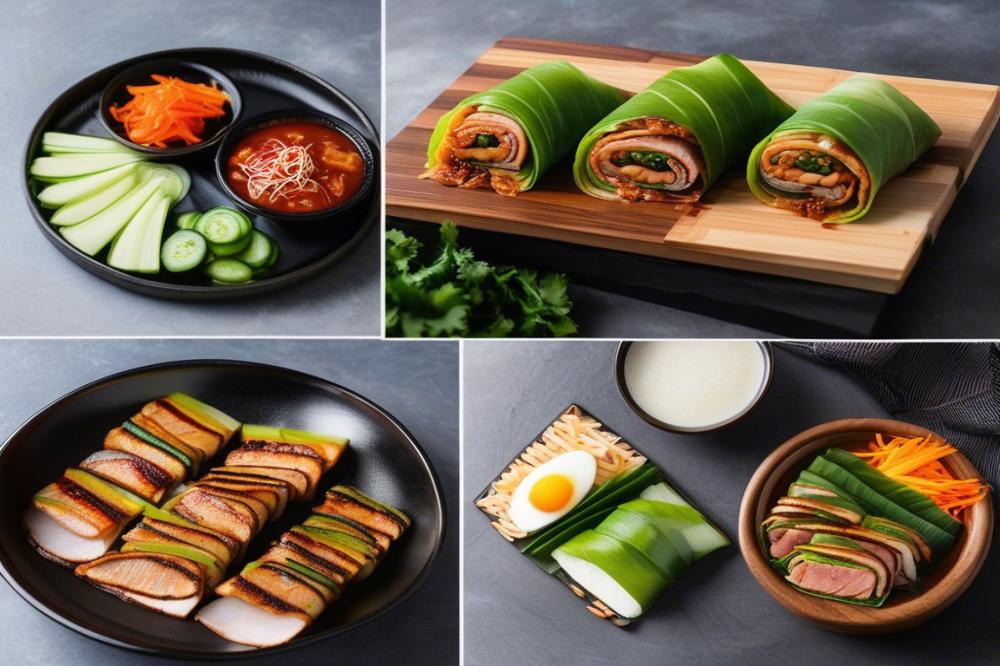
Definition of Bossam
Bossam refers to a popular Korean dish made with steamed pork belly. It is commonly enjoyed in lettuce wraps. Pickled radish adds a tangy contrast to the rich flavors of the meat. People often serve the pork with garlic and a dipping sauce, which enhances the overall taste. This dish is not just food; it’s an experience shared among friends and family.
Historical Background of the Dish
The roots of bossam trace back many centuries in Korea. Originally, it was a dish meant for celebrations and special occasions. The preparation reflects Korean culinary traditions that value communal eating. Historically, families cooked the pork slowly to keep it tender. Over time, it has become a beloved dish found in many households across the country. Its popularity has grown, leading to various adaptations over the years.
Variations in Preparation and Serving Across Korea
Different regions of Korea have specific ways of preparing bossam. In the north, people often use thicker cuts of pork belly. Southern regions may favor spicier dipping sauces, reflecting the local tastes. Some areas add various herbs and spices, bringing a unique twist to the dish. People also enjoy serving bossam buffet-style during celebrations. This allows guests to assemble their own lettuce wraps filled with pork, radish, and sauces. The variety in preparation showcases the diversity within Korean cuisine.
Ingredients for Bossam
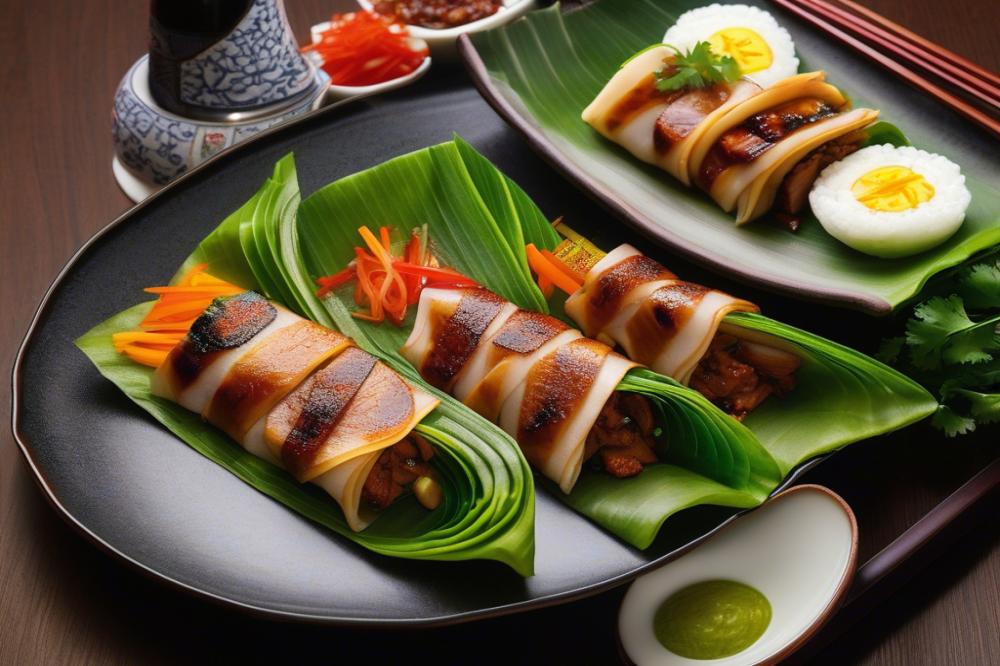
To craft delicious bossam, you will need several key ingredients. Start with 2 pounds of pork belly, which is the heart of this dish. Freshness plays a vital role; high-quality pork will result in tender, flavorful steamed pork. Gather 10 cloves of garlic. Keep them whole; they will infuse the meat with robust flavor. A 2-inch piece of ginger, sliced, adds a pleasant warmth and aromatic essence.
Next, you will require 1/2 cup of soy sauce. This ingredient gives depth and a savory element to the dish. Sugar, in the quantity of 1/4 cup, is essential for balancing flavors. Adding 2 tablespoons of sesame oil will provide a nutty finish.
For the lettuce wraps, select one head of Napa lettuce. This variety is crisp and perfect for holding the succulent pork. Alongside that, prepare 1 cup of sliced pickled radish. The tangy crunch of pickled radish contrasts beautifully with the rich flavors of the pork.
Optional but recommended, Korean chili powder, known as gochugaru, can enhance your dipping sauce. If you choose to make a dipping sauce, assemble various ingredients that range from soy sauce to vinegar for a well-rounded taste.
Nutritional Information
Look at the nutritional aspects of these ingredients. Pork belly is relatively high in fat, but it offers a rich source of protein as well. Garlic and ginger contribute antioxidants and can support a healthy diet. Lettuce is low in calories, making it an excellent wrap choice. Pickled radish provides a source of vitamins, and making it at home can reduce added preservatives.
Importance of Fresh Ingredients in Traditional Recipes
When creating a traditional recipe like bossam, fresh ingredients are paramount. They elevate the overall taste and texture, making cooking an enjoyable experience. Using high-quality pork and vibrant vegetables can enhance flavor significantly. This attention to detail shows respect for the roots of Korean cuisine. By prioritizing fresh items, you ensure each bite of your lettuce wraps is delightful and satisfying.
Method: Step-by-Step Cooking Instructions
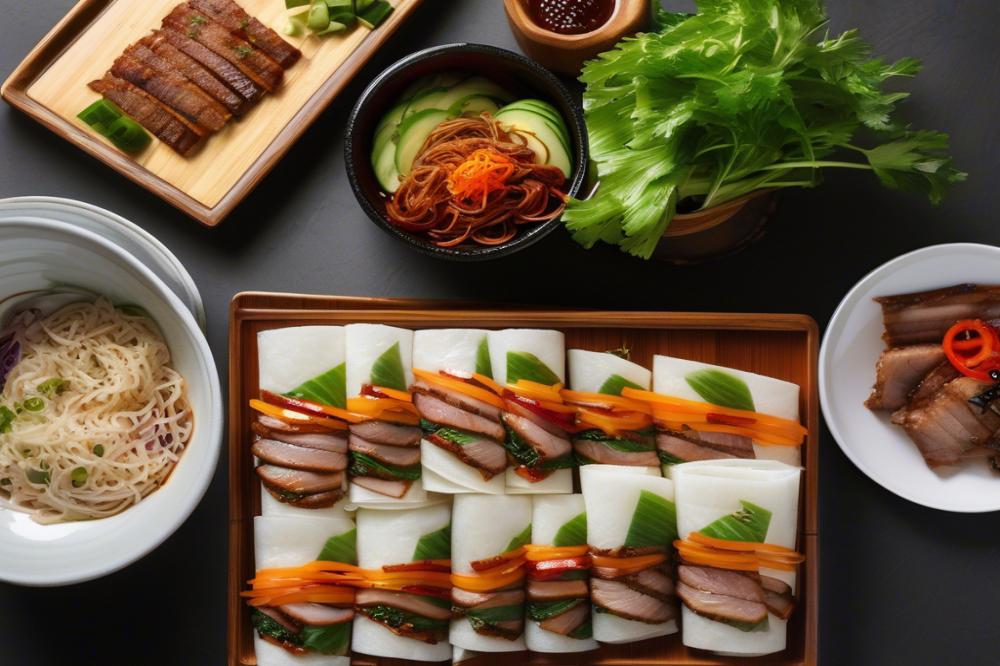
Preparing the Pork Belly
Start with a piece of fresh pork belly. This cut is rich and flavorful, perfect for bossam. Rinse it under cold water to clean and remove any impurities. Next, make crosshatch cuts on the surface. This step helps with marination and flavor penetration.
Now, let’s move to the marinade. Combine soy sauce, rice wine, garlic, and sugar in a bowl. You can add ginger for extra flavor. Coat the pork belly thoroughly with the mix. Cover it and let it rest in the refrigerator for at least 4 hours, or overnight for better results. This will enhance the meat’s taste.
Once marinated, it’s time for the steaming process. Fill a large pot with water. Place a steamer basket above the water level. Add the marinated pork belly to the steamer. Cover and cook on medium heat for about 1.5 to 2 hours. Test for tenderness with a fork. The meat should be easily pierced when done, resulting in beautifully steamed pork.
Making Accompanying Sides
Preparing pickled radish is next. Slice fresh radishes into thin rounds. Mix equal parts of water, vinegar, and sugar in a bowl. This simple mixture will balance the flavors. Add the radish slices to the brine for at least 30 minutes. You can also add chili flakes for a spicy kick. Afterward, taste and adjust sweetness or spice levels as preferred.
Feel free to explore other side dishes too. Kimchi is a popular choice in Korean cuisine. It adds a tangy flavor and complements the rich pork. You could also make a simple salad with cucumbers and sesame oil. These sides enhance your bossam experience.
Assembling the Wraps
Gather all your ingredients on a large serving platter. Lay out fresh lettuce leaves. Use them as a base for your pork belly and side dishes. Grab a piece of steamed pork and place it in the center of the leaf. This creates a delicious filling.
Next, add the pickled radish slices. You can also include a spoonful of the dipping sauce for added flavor. Consider adding a bit of kimchi for an extra layer of taste. The combination of flavors creates a delightful bite.
To create perfect wraps, fold the lettuce like a burrito. Tuck in the sides to secure the filling. A bit of practice makes it easier. Bite into your wrap, enjoying the mix of flavors. Enjoy each delicious piece of this traditional recipe.
Serving Suggestions and Pairings
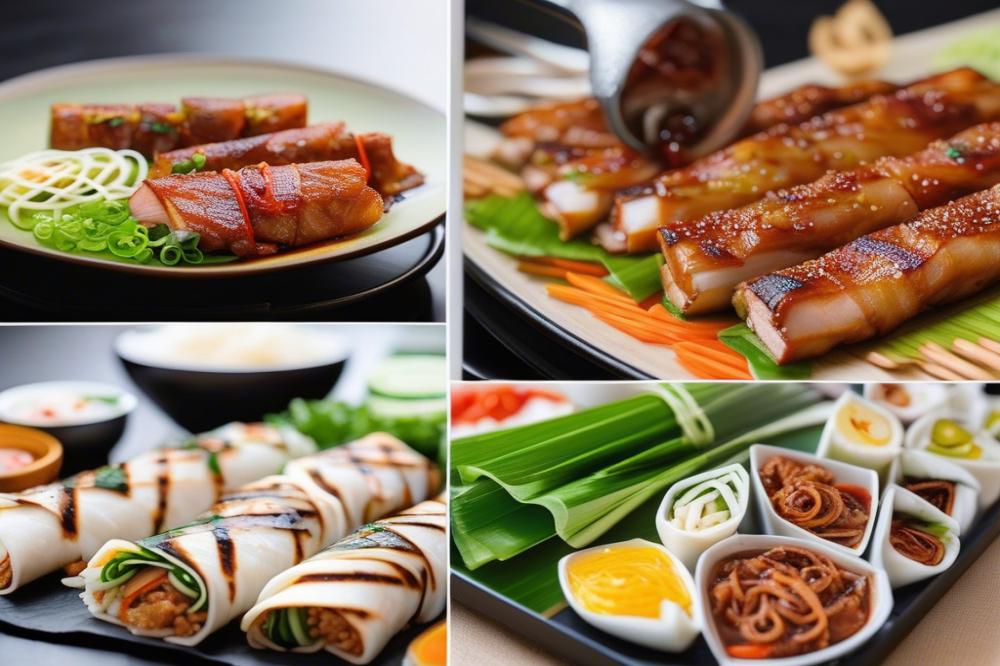
Traditional Ways to Serve Korean Bossam
Serving this dish often includes beautifully arranged plates of steamed pork belly alongside fresh lettuce wraps. Guests traditionally take a piece of the tender meat and place it onto a leaf of lettuce. A slice of pickled radish adds a delightful crunch. Topping it off with crushed garlic and a spoonful of dipping sauce brings out amazing flavors. This traditional recipe highlights the key elements of Korean cuisine in every bite.
Suggested Sides and Drinks to Accompany the Meal
To complement bossam, consider side dishes that enhance the meal. Kimchi is a popular choice, adding a spicy zing. A refreshing cucumber salad or a simple bowl of rice can balance the rich taste of the pork belly. Pairing it with a light Korean beer or traditional rice wine can elevate the dining experience. Adding a few slices of green chili pepper on the side brings an additional heat that some enjoy.
Enjoying Bossam in Social Settings and Family Gatherings
This dish shines in social settings, especially during family gatherings. Offering bossam encourages sharing and conversation among guests. People can customize their own lettuce wraps, making it a fun activity. Speaking of gatherings, it’s common to find this dish featured during celebrations or holidays. The lively atmosphere and delicious food make for memorable moments. Friends and family come together not only to savor the flavors but to create lasting memories through shared dining experiences.
Wrapping Up Your Bossam Experience
Making your own Korean Bossam can be a rewarding journey. First, you learned how to prepare the pork belly, seasoning it with spices that reflect deep flavors. Then, you wrapped the tender meat in fresh napa cabbage leaves, adding delightful sides that complement the dish perfectly. This step-by-step process is not just about cooking; it’s about creating something special from scratch.
Trying your hand at this traditional dish at home is worthwhile. Gather your ingredients, invite friends or family, and cook together. Sharing a meal like bossam can turn a simple dinner into a joyous occasion, filled with laughter and connection. Each bite of savory pork wrapped in crunchy vegetables is not just satisfying but also brings people closer.
In Korean culture, food holds a significant place. Meals are not merely about nourishment but also about bonding with each other. Creating traditional dishes, such as bossam, is a way to celebrate togetherness. Enjoy the process, and remember that every step, from cooking to sharing, adds depth to the experience. Each wrap made with care is a testament to the love and joy found in sharing food.

